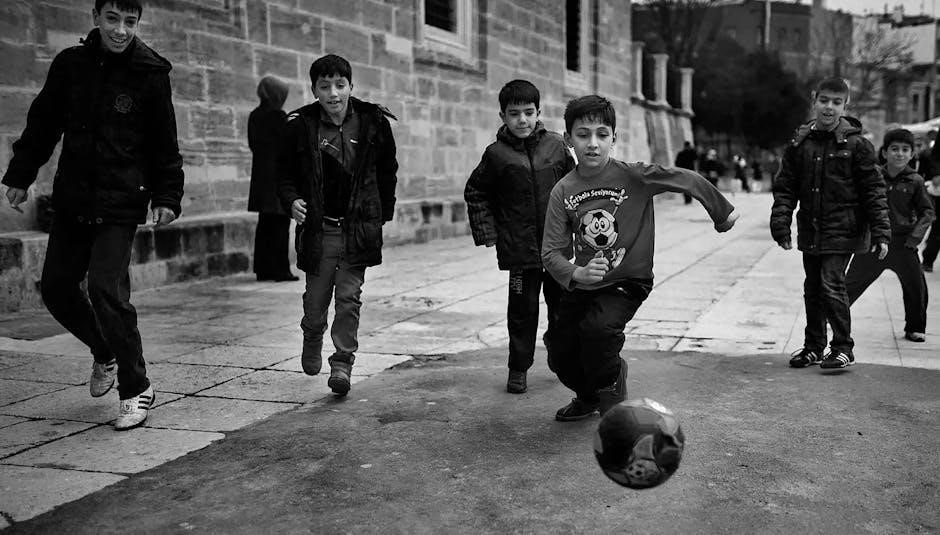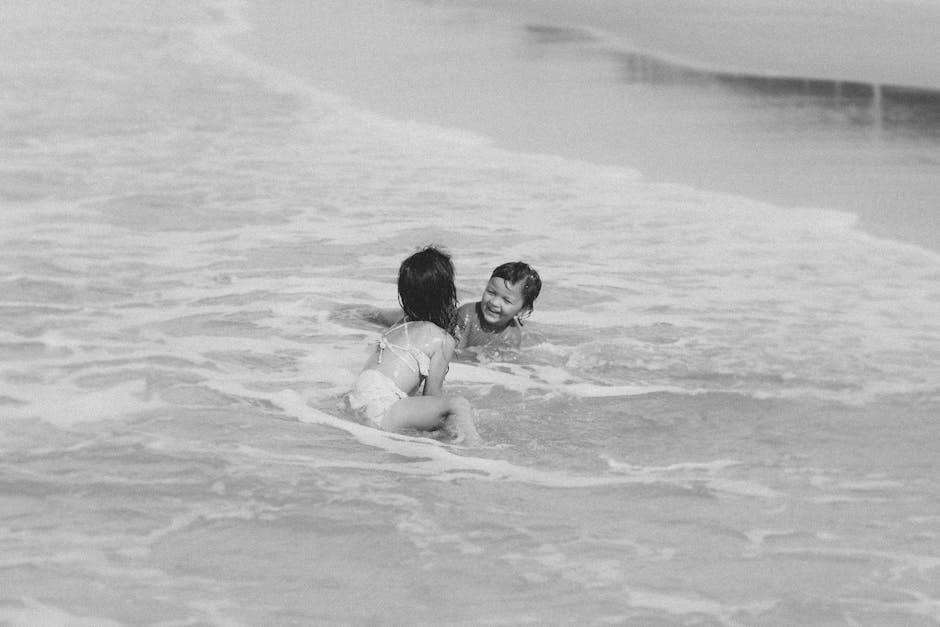What is Bunco?
Bunco is a social dice game‚ typically played in groups‚ emphasizing luck and interaction over complex strategy. It involves rolling dice‚ accumulating points‚ and rotating tables‚ fostering a fun and engaging atmosphere for all players.
Bunco Equipment
To play Bunco‚ you’ll require dice (usually nine‚ three per table)‚ score sheets for tracking individual and team progress‚ and a Bunco bell. A “traveler” item‚ like a fuzzy die‚ can add a fun element to the game.
Dice
In Bunco‚ dice are the primary tool for gameplay. Typically‚ nine dice are used‚ with three dice allocated to each table of four players. These dice are standard six-sided dice‚ and their rolls determine the points scored during each round.
The dice rolling is the central action of Bunco‚ with players taking turns to roll all three dice simultaneously. The outcome of each roll is then compared to the target number for the current round‚ and points are awarded accordingly. The dice are passed around the table in a clockwise direction after each player’s turn.
The dice also play a crucial role in achieving a “Bunco‚” which is a significant event in the game. When a player rolls three dice that all match the current round number‚ it’s considered a Bunco.
Score Sheets and Tally Sheets
Bunco requires both score sheets and tally sheets to keep track of individual and team progress. Each player uses a personal score sheet to record their wins‚ losses‚ Buncos‚ and Baby Buncos throughout the game. These sheets are essential for determining the overall winner and distributing prizes at the end of the night.
In addition to individual score sheets‚ each table utilizes a tally sheet to track points earned by the teams during each round. The tally sheet typically has columns for “Us” and “Them‚” representing the two teams competing at the table. The scorekeeper at each table is responsible for updating the tally sheet as points are scored.
These sheets are essential for fair play and organization.
Bunco Bell
The Bunco bell is a crucial element in the game‚ serving as the auditory signal that governs the start and end of each round. Positioned prominently at the head table‚ the bell is rung to initiate gameplay‚ prompting all tables to begin rolling their dice simultaneously. This creates a sense of synchronized excitement and ensures that all players start and stop together.
Furthermore‚ the bell is rung to signify the end of a round‚ typically when the team at the head table reaches a predetermined score‚ usually 21 points. Upon hearing the bell‚ all play ceases‚ and teams record their wins or losses on their scorecards. The bell adds an element of anticipation and control to the game‚ making it a central part of the Bunco experience.

Basic Bunco Rules
Bunco rules revolve around dice rolling‚ scoring points by matching the round number‚ and table rotations. The goal is to accumulate wins across multiple rounds‚ creating a social and engaging game.
Objective of the Game
The primary objective in Bunco is to accumulate the most wins across all the rounds played. This is achieved by scoring points during each round through rolling dice and matching the target number for that round. Specifically‚ players aim to roll as many dice as possible that match the current round number (e.g.‚ rolling ones in round one‚ twos in round two‚ and so on).
Furthermore‚ rolling a “Bunco” (three of a kind matching the round number) grants a significant point boost and often triggers a special event‚ such as ending the round for the head table. The game involves individual scoring‚ with players tracking their wins and losses throughout the sets of rounds. At the end of the game‚ prizes are typically awarded based on various categories‚ including most wins‚ most Buncos‚ and even a “big loser” prize‚ adding a fun and competitive element to the overall experience.
Gameplay Overview
Bunco gameplay revolves around rolling three dice at each table‚ with players taking turns to score points based on the round’s target number. Each round focuses on a specific number (1 through 6)‚ and players aim to roll as many dice as possible matching that number. A designated scorekeeper at each table tracks the points earned by their team.
The round continues until the head table reaches a predetermined score‚ typically 21‚ at which point a bell is rung to signal the end of the round. Teams then mark their scorecards with a win or loss. After each round‚ winning teams rotate to different tables‚ while losing teams adjust seating arrangements to form new partnerships. This rotation and scoring process repeats for multiple sets of rounds‚ culminating in prize distribution based on overall performance‚ including wins‚ Buncos‚ and even a “loser” category.
Scoring in Bunco
Scoring in Bunco is straightforward‚ involving points for matching dice to the current round’s number. Special scores are awarded for rolling a “Bunco” or a “Baby Bunco‚” adding excitement to each dice roll.
Points for Matching Dice
In Bunco‚ scoring revolves around matching the dice rolls to the current round number. During each round (numbered 1 through 6)‚ players aim to roll the same number as the round number. For every die that matches the round’s number‚ the player earns one point. For instance‚ if it’s round two and a player rolls two “twos‚” they score two points.
These points accumulate throughout the round. A scorekeeper at each table diligently tracks the points earned by their team. The continuous rolling and point accumulation create an engaging experience. This core mechanic drives the gameplay forward until someone achieves a Bunco. Matching dice are fundamental to progressing in the game and winning the round.
What is a Bunco?
A Bunco is the most coveted roll in the game‚ instantly recognizable and highly rewarding. Achieving a Bunco occurs when a player rolls all three dice‚ and all three dice match the current round number. For example‚ in round three‚ rolling three “threes” constitutes a Bunco.
When a player achieves a Bunco‚ they typically shout “Bunco!” to announce their accomplishment. This declaration signals a special moment in the game‚ offering significant rewards to the roller. A Bunco is a moment of excitement and celebration and marks a major turning point in the round‚ potentially leading to victory. It immediately stops the rolling at the head table.
Baby Bunco (Optional)
A Baby Bunco‚ sometimes called a “Funko‚” is an optional rule that adds another layer of excitement to the game. It occurs when a player rolls three of a kind‚ but the number on the dice does not match the current round number. For instance‚ rolling three “fours” during the second round would be considered a Baby Bunco.
Unlike a regular Bunco‚ a Baby Bunco typically does not stop the rolling at the head table. While a Baby Bunco doesn’t usually award points during the round‚ it can be tracked separately‚ and the person with the most Baby Bunco rolls can receive a prize at the end of the game.

Ending a Round and Set
A round in Bunco concludes when the team at the designated “head table” achieves a score of 21 points. As soon as this happens‚ the scorekeeper at the head table rings the bell‚ signaling all other tables to immediately cease rolling. Even if other tables haven’t reached 21‚ the round is over for everyone.
Following the bell‚ each team marks their scorecard‚ indicating whether they won (“W”) or lost (“L”) the round. After scoring‚ players prepare for the next round by switching partners‚ and the winning teams rotate to different tables according to the pre-determined rotation schedule. A complete set consists of six rounds‚ numbered one through six.

Bunco Variations
Bunco is a game celebrated for its adaptability‚ resulting in numerous variations that add personalized twists to the core gameplay. One common variation involves “Baby Bunco‚” where rolling three-of-a-kind that doesn’t match the round number awards a smaller point value‚ often five points. Some groups adjust scoring‚ assigning different point values to specific dice combinations or modifying the Bunco value itself.
Another popular adjustment involves table movement rules‚ such as winners always progressing or losers switching partners differently. These variations cater to diverse preferences‚ ensuring Bunco remains engaging and enjoyable for every group. The key is to establish clear rules before playing.

Bunco Prizes
Bunco prizes often add an extra layer of excitement and friendly competition to the game night. These prizes can range from cash rewards to themed gifts‚ depending on the group’s preferences and budget. Cash prizes are commonly awarded for achievements like the most wins‚ most Buncos‚ or even the most losses (the “Big Loser” award).
Alternatively‚ themed prizes corresponding to the Bunco night’s theme can enhance the fun. A small prize is also commonly awarded for the “Traveler” or “Fuzzy Dice” for the person holding it at the end of the night. Ultimately‚ Bunco prizes should be enjoyable.

